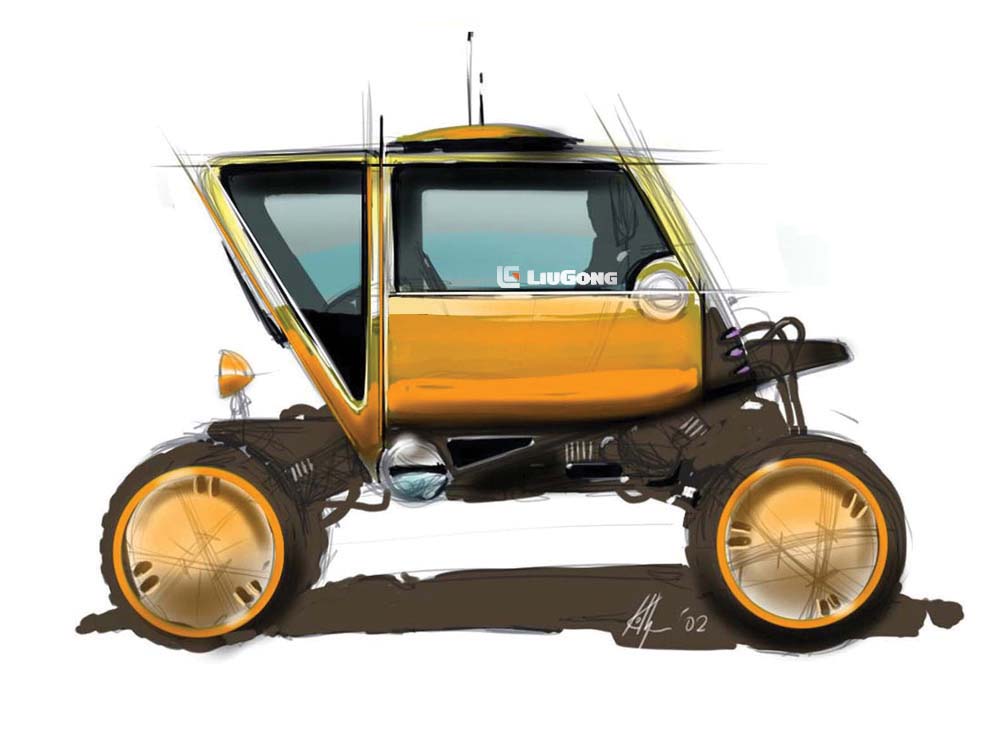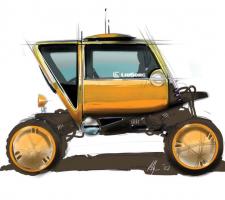
The aesthetic appearance of construction machinery is immediately recognisable, but to a casual observer the technical thought process that influences their designs can be overlooked.
Legislative changes, the safety and comfort of operators, and the continuous development of new technologies make the visual design of construction equipment a complex and intellectually challenging endeavour, says Chinese construction manufacturer
The industrial design team behind the upcoming machines from the company - Gary Major, director of industrial design; Richard Killgren, senior industrial designer, and Ed Wagner, director of new technology and director of test - have decades of design experience in the construction and automotive sectors.
“Today’s end-user is far more design savvy than their predecessors, so aesthetics is a hugely important factor. If something looks right, looks trustworthy, a little spark in the back of their brain immediately tells them it is going to be a good purchase,” says Major.
“Our own approach is already giving rise to LiuGong’s aesthetic evolution: in other words, the DNA that will permeate every design and each machine’s lineage will be so obvious that you could trace its family tree.”
Killgren, who spent years in the automotive industry with Lotus and Bentley, says: “The perception of quality will help to sell a machine.”
The challenge in defining any construction machine with a specific identity stems from the varying specifications that must be adhered to, be it as a result of engineering or regulatory demands.
Major points to the gradual progression towards the energy-efficient Tier IV Final EU emissions standards. This has had as much an influence on the design of construction machines as it has mechanically.
“Engine emissions have changed components such as powertrains and the particulate filter assembly, growing their size enormously. Because of that, engine enclosures are now huge which creates challenges in meeting sightline requirements, which in turn impacts the overall aesthetics,” he says.
Such challenges can be offset by the continuous development of new technologies, an area which LiuGong says it is actively researching and incorporating into its designs.
“Developments in materials, especially in the area of composites, have allowed us greater freedom to explore form, and the increased aesthetic awareness from the end-user has allowed us to push for bolder designs,” says Major.
“From a visual standpoint, the better the A-surface, the better the machine looks. With construction bodywork, we are talking about 2, 3, 4mm thick steel at times, so to get that level of definition has been very difficult. With composite technologies and the likes of injection moulding it is considerably easier to attain the style of A-surface we want for future generations of LiuGong machines.”
The value of new technologies enhances the design, as well as energy and operational efficiency, but LiuGong says its industrial design team still places great emphasis on the end-user.
“It is much more important to acquire knowledge directly, through experience or observations, than through questionnaires or other sources of secondary feedback.
Identifying the benefits these technologies have for the end-user is indispensible information for us during the design process: that’s why LiuGong has operators within its large test organisation, and why we constantly seek feedback from actual customers who trial run our prototype machines,” says Wagner.
One area that demonstrates how new technologies can enhance this synergy of machine design, efficiency and operator ergonomics, is in the cab.
“Operator enclosures will become far nicer spaces in which to work: fully climate-controlled with superb all-round visibility, pressurised for cleanliness and utterly intuitive to interface with,” says Major.
“There is a lot of research going on into that side of the industry: we’re not quite there yet, but it seems an inevitable evolution and one that we at LiuGong are very much engrossed in because of the avenues of creativity it opens for the design team.”
“In the future, gesture control systems will likely take much of the difficulty out of driving these vehicles. For example, an operator could interact with the machine by wearing a glove with monitors in. He would use his hand to describe what movement he wants to action from the machine.
engrossed in because of the avenues of creativity it opens for the design team.”
Major, who hopes to see a push towards more exotic hybrid drive systems that will help to shrink the package’s bodywork and offer greater creative freedom, added: “Likewise, technologies cascading toward the construction industry like battery technology and energy recovery systems, be it an influence from the automotive industry, military or technological test-beds like Formula 1, means that construction machinery design has a very exciting future.”
















